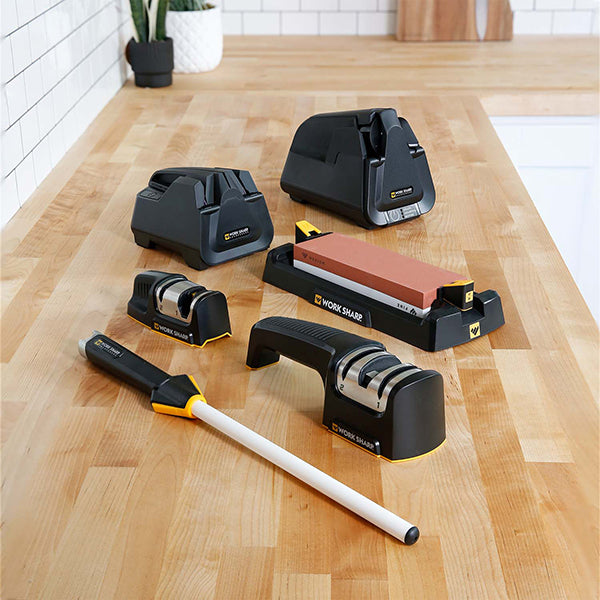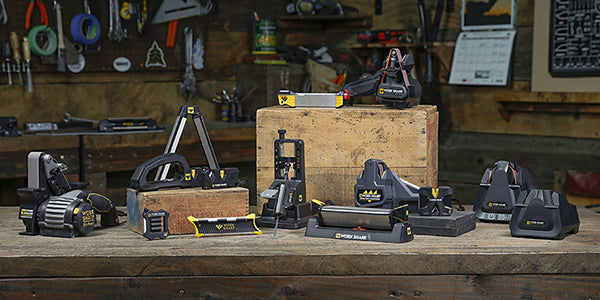Paring Knives Buyers Guide
from Cut it Fine, www.cutitfine.com
Paring knives seem like such small and inconspicuous little knives that many people have asked me, “Why are you planning to write a buying guide for paring knives?” The truth is that paring knives aren’t as simple as they first appear to be. Of course, many of the things you should consider when purchasing a paring knife are the same things you should consider when purchasing any knife, such as balance and quality of steel. Still, I believe it is important to remind ourselves of these considerations every now and then. In addition, paring knives come with their own set of “‘rules”, so to speak, which should be followed. Since there are four different types of paring knives, I have written another entire article focused on differentiating between the appearance and uses of each of those different knives. If you are not already familiar with the different types of paring knives, you may want to head over to our “Types of Paring Knives” page now to learn a little bit about them, since this article will be referring to them. This article is dedicated to helping you find the best paring knife to suit your needs by teaching or reminding you about the various things you should look for in a paring knife. We will cover basic considerations which should apply to anyone thinking of purchasing a paring knife, as well as considerations specific to how you intend to use your paring knife.
Sturdy With a Strong Tip
If you are planning to purchase a Curved Blade or Bird’s Beak paring knife you will want to be sure that the blade is thick and created from a very strong metal. I believe that something of the high-carbon variety would be best. Although stainless steel can be rather strong it is not as strong as high-carbon steel. The thickness of the blade along with the type of metal it is created from will affect its ability to withstand the pressure you place on it. If you are planning to use your Curved Blade to core an apple, for example, you will likely be placing a great deal of pressure on your knife as you plunge it into your apple. You will want your blade to withstand that pressure as well as the resistance it will face as you move it through the apple’s flesh. The tip of your Curved Blade or Bird’s Beak should be strong and sharp to cut into your fruits and vegetables as you core and carve them. The last thing that anyone wants to experience when trying to perform either of these tasks is having their knife’s blade snap in half or having the tip break off. Not only would this be a great inconvenience, it could also be a safety hazard.Consider Your Handles
Handles are extremely important to our discussion about paring knives, because we often work with paring knives away from a cutting board. Holding your food directly in your non-dominant hand while cutting it with your dominant hand gives you the control you need to perform some of the intricate tasks most associated with paring knives. Unfortunately, this practice also puts your non-dominant hand at incredible risk if you lose control of your knife. To maintain optimal control of your knife you will want to select one with a thick handle. As a general rule, thick handles are much easier to control than thin handles, because you will be able to hold them more firmly and they are less likely to slip or flip around in your hand. Select a paring knife with a handle is neither completely round nor flat. Round handles can spin in your hand, especially if your hands are slick or sweaty. Flat handles can become uncomfortable over time and usually aren’t thick enough to allow for proper control. An oval or D-shaped handle is best suited for a paring knife. Speaking of grip, you will want to be sure that your knife’s handle is not one which will easily slip and slide around when it is wet. We all get a certain amount of juice or sweat on our hands from time to time as we work. A handle with some sort of texture or non-slip coating will offer the best control in these situations.Full Tang is Better
This brings me to my second major point – it is always better to choose a full-tang knife. In all honesty, this point applies equally to all kitchen knives. In the case of paring knives, there are two major reasons why this is important. Before we get too far into this discussion, allow me to give you a quick lesson as to what full tang means. If you already understand this concept, skip ahead to the next paragraph. Full tang knives are those that have blades that extend all the way through their handles. Of course, the sharp part of the blade is external, but the metal itself proceeds downward, through the handle. Usually, these blades are held inside the handle with two or three metal rivets. As we discussed in the section above, no one wants to experience their knife snapping in half. While thin blades can snap in half while you are coring something, knives can also break apart at the area where the blade meets the handle. As I’ve already said about snapping blades, a breaking knife can be both frustrating and dangerous.The Overview
I would like to quickly summarize what we have discussed here. To start with, it is important to know the differences between the different types of paring knives. For more information about that, please visit our Different Types of Paring Knives page. When selecting a Curved Blade or Bird’s Beak paring knife, choose one with a thick, sturdy blade and a sharp tip to reduce the likelihood of its bending and snapping during coring and carving. When selecting any paring knife, try to find one which is full tang for increased safety. Handles should be thick, oval or D-shaped, and textured or covered with a non-slip coating to increase the control you have over your paring knife.






